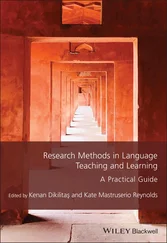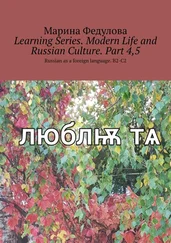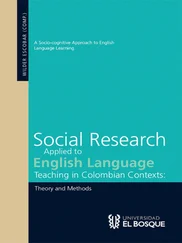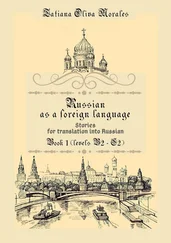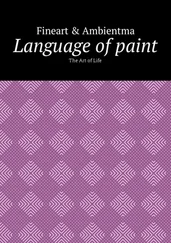1.3.5 L. Rubin – Artistry in Teaching
Ten years after the publication of Dillon and Travers’ book, L. Rubin’s book Artistry in Teaching (1985), documents a much wider-ranging attempt to connect essential elements of teacher training to artistic training; this time in the context of in-service programs for teachers. In considering the empirical research on the clowning courses which will be the focus of later chapters, Rubin’s study must be seen as the most comparable and relevant long-term research project. Hence, it will be necessary to examine his work in some detail.
Rubin’s approach is based on an understanding of teaching in which the essential skills which constitute artistic teaching are not seen as reflecting a particular methodology, but have to do with subtle and largely intangible factors which lead to knowing what is necessary at any given moment. This ‘feel’ for the right thing at the right time is seen as the benchmark of artistic teaching.112 An understanding of teaching as an art based on mastering such elusive qualities clearly raises the question of whether such skills can ever be clearly defined and/or learned. Rubin directly addresses the difficulties which his concept poses:
An interesting question therefore arises: even though the characteristics of artistic teaching are subtle and elusive, not easily dissected and defined, can they nevertheless be cultivated? That is, can an intuitive “feel” for what is right and wrong in teaching be developed? Parallels do exist in other forms of human endeavour. Great cooks, for example, “season to taste.” They rely principally on finely honed palates which have been acquired through many years of practice. Still, students of cuisine who aspire to excellence are somehow guided toward this sense of taste from apprenticeship with a master chef. Similarly, we speak of the “nose” developed by a wine connoisseur, the “ear” of a fine musician, the “eye” of a skilful artist, and the “hand” of a great sculptor. Can we, then, make it possible for teachers to master the delicate and subtle nuances of their craft? Little in the research literature on teacher training seems to be of any real help.113
In discussing the common attributes of those teachers whom he considers to be most artistic and successful, he sees an essential underlying skill in their ability to adapt effectively to a variety of situations. He is struck with their abilities to improvise creatively and to act upon inspiration as it occurs in classroom situations.114 In this context he sees the role of intuition and imagination in responding creatively to unforeseen developments as particularly decisive. At the same time, he makes clear that his understanding of artistic teaching leaves a wide range of possibilities for both disparate, personal styles as well as for the individual manner in which such capabilities are developed:
Artist teachers, consequently, differ from ordinary teachers in that they function with consummate skill. Some, blessed with natural gifts, rely principally on instinct. Others, less intuitive, cultivate equally impressive artistry through practice and effort.115
In the end he describes four general attitudes which he considers to reflect the common basis which such teachers share:
The teachers who eventually attained the highest level of artistry were characterized by four primary attributes: first, they made a great many teaching decisions intuitively; second, they had a strong grasp of their subject as well as a perceptive understanding of their students; third they were secure in their competence and expected to be successful; and fourth, they were exceedingly imaginative.116
1.3.6 Relevance for Teacher Training
In discussing his experiences with traditional teacher training, Rubin explains what he sees as inherent weaknesses in such programs. He argues that such programs may, in the end, actually prevent teachers from realizing their potentials:
…the usual teacher training program, both pre-service and in-service is often a liability. As the teachers tried to construct lesson staging, mood setting, and motivational activities, it became obvious their imaginative faculties had been blunted. They repeatedly sought advice on “acceptable methods.” When these requests were politely ignored, their apprehension over the need to invent rose sharply. Not only was the demand for originality threatening, but their natural aptitude for imagery, fantasy, and whimsy had been damaged by the prescriptive formulas ingrained during their professional preparation.117
Rubin sets himself the ambitious goal of designing an in-service program for teachers wherein they would be encouraged to develop artistic qualities which would enhance and enliven their teaching. A key initial element of this program involved first identifying and observing gifted teachers and postulating a series of attributes intrinsic to artistic teaching. A further decisive aspect was his recognition that a crucial step towards being able to work on developing such characteristics lay in the development of a creative attitude and state of mind which could become internalized. This required confronting the anxieties which often accompany such changes and developments:
Since creation involves a risk of failure, it sometimes generates anxiety. Can teachers acquire the psychological study safety essential to inventive behaviour? Can teachers learn to view the familiar in unfamiliar ways, to see possibilities in the seemingly impossible? In short, can the creative spirit be cultivated?118
He maintains that the fundamental change in attitudes which this may require for some teachers must be considered an indispensable part of their entire development. At the same time, he recognizes that this is a long-term process:
Since attitudes have a profound effect on teaching behaviour, it is curious that teacher training has so often ignored them. (…) First, we assume that attitudes and beliefs can be changed through mandate, exhortation, or lecture. Unfortunately, human impulse is made of firmer stuff. Beliefs run too deep to be easily swayed by words, whether printed or spoken. Usually they must be modified through the same processes by which they were formed – consistent experiences accumulated over time. (…) …the time allotted to a professional development activity is usually short, whereas the time required for authentic attitudinal change is usually long. It may take more time for teachers to develop faith in a technique than to learn its use.119
Whether such developments actually occur hinges on how deeply they are connected to the teacher’s own sentient life. He argues that the preoccupation in teacher education with what teachers should know often eclipses the essential aspect of what they actually feel , which he considers to be the underlying basis of what they later do. In this context, he quotes the philosopher Susanne Langer: “Where nothing is felt, nothing matters.”120
A further aspect which he sees as essential to in-service programs devoted to the development of artistry in teaching is the development of what he calls the capability of ‘collateral teaching’.121 By this he means the ways which outstanding teachers are able to work simultaneously towards multiple objectives, taking maximum advantage of possibilities to address primary and secondary goals at the same time, establishing links, drawing on latent resources, clarifying and reinforcing ideas in a highly expeditious manner. He contrasts the “over-simplicity” and “excessive plainness” of many lessons with the kind of intensity and “energized learning” which can occur when multiple opportunities are being used.122 He draws a comparison to illuminate what he means:
Читать дальше

